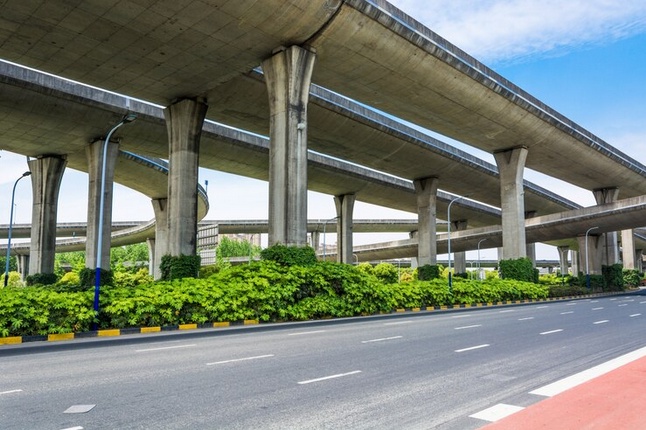Introduction:
Highway drainage design plays a critical role in ensuring the safety, functionality, and longevity of transportation infrastructure. Effective drainage systems are essential for managing stormwater runoff, preventing flooding, and preserving the integrity of roadways and adjacent properties. In this comprehensive guide, we'll explore the essential principles and best practices of highway drainage design, providing valuable insights to engineers and transportation professionals tasked with designing and maintaining drainage systems for highways and roadways.
Understanding the Importance of Highway Drainage:
Highway drainage is essential for maintaining safe driving conditions and protecting infrastructure from the damaging effects of water-related hazards. Proper drainage design helps to minimize the risk of surface water accumulation, erosion, and pavement deterioration, which can compromise roadway integrity and pose safety hazards to motorists. Additionally, effective drainage systems reduce the risk of hydroplaning and flooding, enhancing the overall safety and reliability of transportation networks.
Key Principles of Highway Drainage Design:
Highway drainage design is guided by several key principles aimed at effectively managing stormwater runoff and minimizing the impact of water-related hazards on roadway infrastructure. These principles include:
-
Grading and Slope: Proper grading and slope design are essential for directing surface water away from roadways and into drainage channels or collection systems. Highways should be graded to ensure positive drainage, with slopes directing water toward designated drainage outlets to prevent ponding and standing water on road surfaces.
-
Hydrology and Hydraulics: Highway drainage design incorporates principles of hydrology and hydraulics to analyze rainfall patterns, calculate runoff volumes, and determine the capacity and sizing of drainage structures. Engineers use hydraulic modeling techniques to simulate flow rates, velocities, and floodplain inundation to optimize drainage system performance.
-
Conveyance Systems: Highway drainage systems typically consist of conveyance systems, including culverts, ditches, swales, and storm sewers, designed to transport stormwater runoff away from roadways to designated discharge points. Engineers select appropriate conveyance system components based on factors such as flow rates, hydraulic capacity, and site conditions.
-
Erosion Control: Highway drainage design incorporates erosion control measures to prevent soil erosion and sedimentation in drainage channels and watercourses. Techniques such as erosion-resistant vegetation, riprap, and check dams help stabilize soil and protect drainage infrastructure from erosion caused by high-velocity runoff.
-
Maintenance Considerations: Effective highway drainage design considers long-term maintenance requirements to ensure the continued functionality and performance of drainage systems. Engineers design drainage structures and components to facilitate inspection, cleaning, and repair, minimizing the risk of clogging, blockages, and structural deterioration over time.
Best Practices for Highway Drainage Design:
In addition to adhering to fundamental principles, engineers and transportation professionals can implement best practices to optimize the design, construction, and maintenance of highway drainage systems. These best practices include:
-
Designing for Climate Resilience: Highway drainage systems should be designed to withstand the impacts of climate change, including increased precipitation, more frequent extreme weather events, and rising sea levels. Engineers should consider future climate projections when sizing drainage structures and incorporating resilience measures to adapt to changing environmental conditions.
-
Integrating Green Infrastructure: Green infrastructure techniques, such as vegetated swales, permeable pavement, and bioretention basins, can help enhance the sustainability and performance of highway drainage systems. By incorporating green infrastructure into highway design, engineers can reduce stormwater runoff, improve water quality, and enhance the aesthetic value of transportation corridors.
-
Implementing Low-Impact Development (LID) Practices: Low-impact development practices, such as rain gardens, infiltration trenches, and rooftop gardens, can help minimize the environmental footprint of highway drainage systems. LID techniques mimic natural hydrological processes, allowing stormwater to infiltrate into the ground and recharge groundwater aquifers, thereby reducing the burden on conventional drainage infrastructure.
-
Prioritizing Maintenance and Inspection: Regular maintenance and inspection are essential for preserving the functionality and longevity of highway drainage systems. Transportation agencies should establish routine maintenance schedules, conduct periodic inspections of drainage infrastructure, and promptly address any maintenance issues or deficiencies to prevent deterioration and ensure optimal performance.
-
Incorporating Community Engagement: Highway drainage design should involve community stakeholders, including residents, businesses, and local government agencies, to ensure that drainage solutions align with community needs and priorities. Engaging stakeholders early in the design process can foster collaboration, build trust, and promote consensus around drainage design decisions.
Conclusion:
Highway drainage design is a critical component of transportation infrastructure planning and development, ensuring the safety, functionality, and resilience of roadways in the face of water-related hazards. By adhering to essential principles and implementing best practices, engineers and transportation professionals can design effective drainage systems that minimize the risk of flooding, erosion, and pavement deterioration, while promoting environmental sustainability and community resilience. Through thoughtful design, careful planning, and proactive maintenance, highway drainage systems can continue to serve as vital lifelines of transportation networks, supporting economic prosperity and enhancing quality of life for communities around the world.


No comments yet